Economics Nobel Prize winner Abhijit Banerjee shakes hand with Prime Minister Narendra Modi in New Delhi on Monday.


Economics Nobel Prize winner Abhijit Banerjee shakes hand with Prime Minister Narendra Modi in New Delhi on Monday.
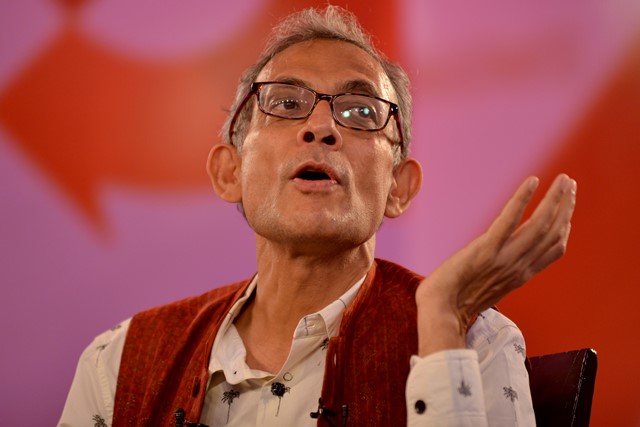
It is a sign of the present times that jubilations that followed last week’s announcement of Nobel have been the shortest. Criticism began almost immediately after Abhijit Vinayak Banerjee was declared co-winner of the Nobel Memorial Prize for Economic Sciences.
Social media critics have called him a fellow-traveller, if not an outright communist, in the best Bengal tradition. Some have questioned his middle name given by his Maharashtrian mother. Others say the “much-married” man got the Nobel for marrying a Christian. Actually, it is his criticism of the Modi Government’s economic policies. Its Commerce Minister Piyush Goyal has labeled Banerjee “Left-leaning”.
Abhijit and wife and co-winner Esther Duflo, a French-American, are unperturbed and hope to continue working with various Indian state governments irrespective of their political orientation, including those ruled by the ruling Bharatiya Janata Party (BJP).
They are in the company of the 1998 Nobel laureate, also an eminent economist, Amartya Sen. Conferred Bharat Ratna, India’s highest civilian honour by an earlier BJP-led government, Sen also had a prolonged ‘honeymoon’ with the Manmohan Singh Government. But political and ideological battle lines are sharp now.
Banerjee criticized the 2016 demonetization, saying he never understood the logic behind such a drastic step, adding it was being viewed with “bewilderment” in serious academic circles.
He joined 107 well-known economists to assail the tendency “to suppress uncomfortable data” during Modi 1.0 (2014-2019) and sought restoration of access and integrity to public statistics. Their joint statement in March came after the government had held back publication of job data. The job situation has only worsened since.
Banerjee has advised the current policymakers in cryptic terms: Don’t waste time worrying about monetary policy as the economy is in a “tailspin”. Instead, find ways to revive demand to lift the sinking economy.
Post-Nobel announcement, he told a press conference called by his current employers, the Massachusetts Institute of Technology at Cambridge, US, that the need of the hour was to pump money into the economy “especially in the hands of the poor”.
Banerjee’s comments come in the backdrop of concerns about a protracted slowdown, with India’s GDP growth moderating to five percent in the first quarter and the index of industrial production slipping to 1.1 percent for August. The aviation, passenger vehicles, telecom and banking sectors are facing rough times.
Gita Gopinath, Chief Economic Advisor of the International Monetary Fund (IMF), another high profile Indian-American economist, also gives similar advise to the Modi Government whose political management of the economy has forced out two governors of the Reserve Bank of India, the country’s central government.
Unsurprisingly, Finance minister Nirmala Sitharaman during her US visit took pot shots at critics all-around and unmistakably, at former premier Manmohan Singh who unleashed economic reforms.
It is politics driving economics. Banerjee and Duflo had devised the “Nyuntam Aay Yojana (NYAY), a poverty-alleviation measure that Singh’s Congress Party had promised during this year’s elections that it lost. Unsurprisingly, again, Goyal has declared that like the Congress, this scheme was also “rejected by the people of India.”
However, the Modi Government continues with many of the Congress’ welfare measures by merely tweaking them and changing labels to its own heroes. Actually, when it comes to anti-poverty measures, all parties are guilty.
To be fair to the Nobel-winning couple, the dole it recommended under NYAY was Rs 2,500 per family per month. But the Congress hiked it to Rs 6,000. Banerjee told a TV channel: “There is always a little bit of a willingness in India to announce policies because they sound good or have a political purpose.”
He told a TV channel that India’s economy is “on a shaky ground” and that the government should do pilots of policy initiatives carefully. He also suggested formulating policies that work rather than “imposing those which the government imagines will work.”
This not-easy-to-dismiss advice comes from those who have not just worked on theories, howsoever realistic and relevant, but have actually worked on development models in India and other countries. The Nobel is for “experimental approach to poverty alleviation” that includes a randomized control trial (or RCT).
Banerjee, with Duflo and Sendhil Mullainathan, founded the Abdul Latif Jameel Poverty Action Lab (J-PAL) in 2003. They have concentrated on researching how policy interventions like de-worming programmes or after-school hours tutoring for first-generation learners can help reduce poverty. Their work on a body of experimental economics work has helped developing countries in Africa, South and Southeast Asia.
Then, why is this criticism? A good part of it, against Banerjee especially, comes because he is too contemporary to be placed on a high pedestal.
An alumnus of Kolkata’s Presidency University (then a college under University of Calcutta) from where Sen had also graduated, Banerjee preferred the vibrant Jawaharlal Nehru University (JNU) to sedate Delhi School of Economics for his Masters. He shunned all political party-affiliated students’ bodies but was indeed, Left-leaning and did argue, agitate and go to jail.
At 27, he earned his doctorate from Harvard University. Duflo, his wife, co-researcher and former student, is 47, the youngest and only the second woman to win a Nobel in Economics. She hopes her success will inspire many women.
With Banerjee, she wrote ‘Poor Economics: A Radical Rethinking of the Way to Fight Global Poverty’, which won the Financial Times and Goldman Sachs Business Book of the Year Award in 2011.
Michael Kremer, the third co-winner, is the Gates Professor of Developing Societies in the Department of Economics at Harvard University. A Fellow of the American Academy of Arts and Sciences, a recipient of a MacArthur Fellowship, the economist has similarly worked on health and agricultural interventions to fight poverty. In sum, the trio, with 400 personnel of J-PAL, has done considerable, solid, work on anti-poverty interventions.
That they’ve been awarded the highest honour in the discipline is recognition of the fact that there’s still hope to fight poverty without succumbing to the polarizing debate between Right and Left-wing populism.
This comes when welfare-ism, although essential, has been found to be wasteful, breeding sloth among the beneficiaries and corruption among those who distribute the largesse in different forms.
Taking the larger picture from them, it is essential to know what causes poverty and how poor behave. For, although the global economy has grown faster than ever under capitalism, millions have failed to reap its benefits. Capitalism’s defence, especially in a democracy, is that it is possible to help the have-nots by making policies directed towards them. Many such policies have been made and implemented. Yet, as the Hindustan Times points out, poverty persists, and so does inequality as growth models are doubted.
There is no quick-fix. Banerjee, for one, favours higher taxes at higher incomes. The tax system should deal with inequality. But higher growth doesn’t necessarily breed inequality. No economic law indicates a tradeoff between the two.
All this may be ‘Greek’ to the political class across the world. But it needs to be understood and imbibed if they genuinely want to “serve the people.”The writer can be reached at mahendraved07@gmail.com
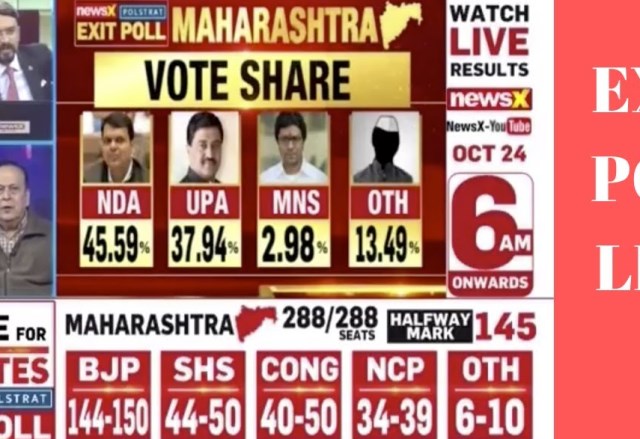
Exit polls on Monday predicted BJP getting re-elected with a big victory in Haryana on its own and with its ally Shiv Sena in Maharahstra.
In Maharashtra, various exit polls except India Today-Axis My India predicted over 200 seats for BJP-Shiv Sena alliance in the 288-member assembly.
India Today-Axis My India poll predicted the ruling alliance in Maharashtra getting between 166 and 194 seats.
Congress-led United Progressive Alliance (UPA) which includes NCP was pegged to get 48 to 105 seats in the state.
The poll gave BJP 109 to 124 seats and 57-70 seats to Shiv Sena. It gave 32-40 to Congress and 40-50 seats to NCP.
Times Now exit poll gave 230 seats to NDA and 48 seats to Congress-NCP alliance in Maharashtra.
In Haryana, it predicted 71 seats for ruling BJP and 11 for Congress.
ABP News-CVoter poll projected 204 seats for the BJP-Shiv Sena alliance and 69 seats to Congress-NCP alliance in Maharashtra.
It gave 70 seats to BJP and eight seats to Congress in Haryana.
The News18-IPSOS poll gave BJP-Shiv Sena alliance a massive 242 seats while it predicted that Congress-NCP alliance getting 39 seats.
In Haryana, the poll predicted getting 75 seats, Congress 10 and Dushyant Chautala-led Jannayak Janata Party (JPP) two seats.
The exit poll done by Republic TV-Jan Ki Baat predicted 223 seats for “BJP plus” and 54 seats for “Congress plus” in Maharashtra. It predicted 11 seats for others.
In Haryana, the poll predicted BJP getting 52-63 seats, Congress 15 to 19 seats and JPP five to nine seats. The poll said other parties and independents getting seven to ten seats.
NewsX-Polstrat poll said BJP-Shiv Sena alliance getting 188-200 seats and Congress-NCP 74-89 seats. In Haryana, it predicted 65-70 seats to BJP, 15-20 seats to Congress and four to nine seats for JJP. (ANI)

Winner of the 2019 Nobel Prize in Economics Abhijit Banerjee at a function in New Delhi on Monday.
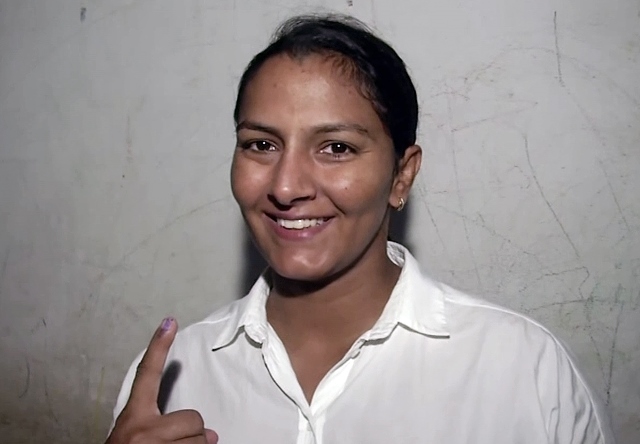
Wrestler Geeta Phogat showing mark of indelible ink after casting her vote, during the Haryana Assembly Election, at a polling booth in Balali village in Charkhi Dadri constituency, on Monday.
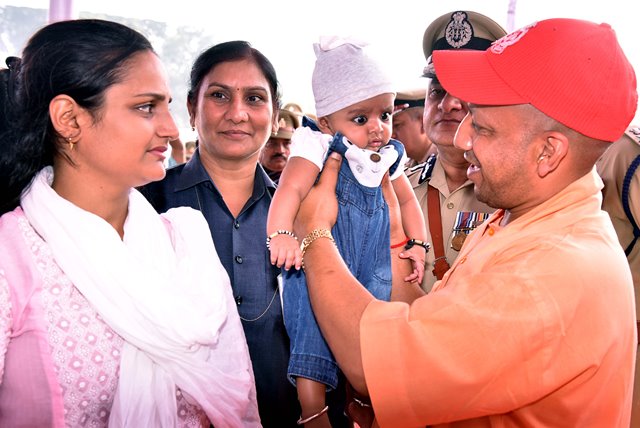
Uttar Pradesh Chief Minister Yogi Adityanath with a toddler during Police Smriti Diwas, an event to honour the martyrs of state police force, at police line in Lucknow on Monday.
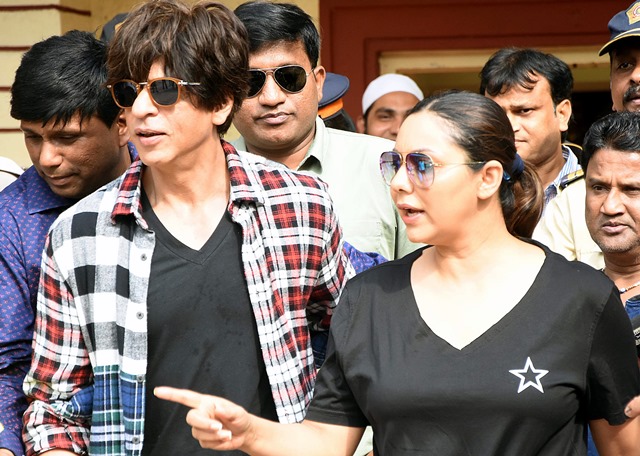
Bollywood actor Shahrukh Khan with his wife Gauri Khan arrives at a polling booth in Mumbai to cast his vote for the state Assembly elections on Monday.
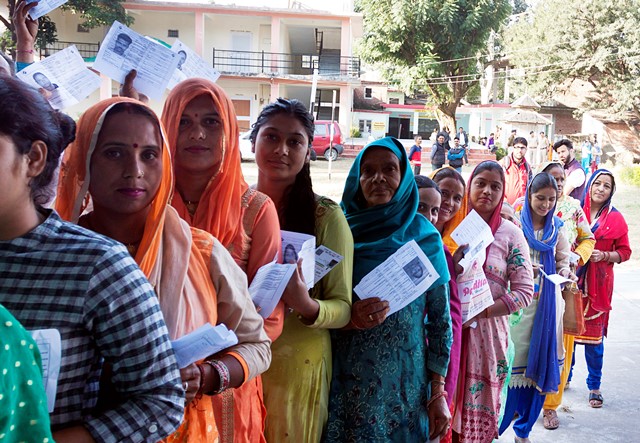
Maharashtra saw 60.5 per cent voter turnout till 6 pm in assembly polls while Haryana registered a voting percentage of 65 per cent, the Election Commission said in New Delhi on Monday.
The polling percentage was 60.25 per cent in the bypoll for Satara Lok Sabha seat. The state had recorded 63.08 poll percentage in the 2014 Lok Sabha polls and 60.79 per cent in this year’s General Elections
It said that the polling percentage would to go up once all the votes are taken into account.
The state had recorded 76. 54 per cent voting in the 2014 assembly polls. The voting percentage was 71.84 per cent in the 2014 Lok Sabha election and 70.35 per cent in this year’s Lok Sabha election. (ANI)
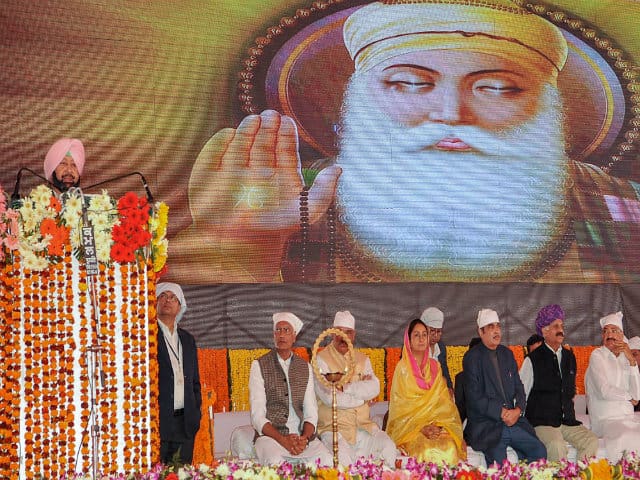
Pakistan on Monday agreed to sign the agreement on the Kartarpur Sahib Corridor on October 23, sources in Pakistan’s Ministry of Foreign Affairs said.
The development comes after India on Monday said that it is ready to sign the agreement with Pakistan on the same date even as it expressed “disappointment” that the neighbouring country did not cede to a request to withdraw the USD 20 service fee per pilgrim per visit to Gurudwara Kartarpur Sahib.
“While agreeing to sign the Agreement, the Government of Pakistan has been once again urged to reconsider its insistence to levy service fee on pilgrims. India would be ready to amend the Agreement accordingly at any time,” the Ministry of External Affairs (MEA) said in a statement.
“It is a matter of disappointment that while understanding has been reached on most of the elements for facilitating the visit of pilgrims from India, Pakistan continues to insist on levying a service fee of USD 20 per pilgrim per visit. Government has consistently urged Pakistan that in deference to the wishes of the pilgrims, it should not levy such a fee,” MEA said.
The MEA informed that the government of India has taken the initiative to put in place the state of art infrastructure and open the Kartarpur Sahib Corridor on the auspicious occasion of the 550th Birth Anniversary of Guru Nanak Dev.
“In view of the long pending demand of the pilgrims to have visa-free access to Gurudwara Kartarpur Sahib and in the interest of operationalisation of the Corridor in time before the 550th Birth Anniversary of Guru Nanak falling on November 12, Government has today conveyed that we would be ready to sign the Agreement on Kartarpur Sahib Corridor on October 23, 2019,” the MEA said.
This was done so that the pilgrims from India and those holding Overseas Citizen of India Card can undertake a visit to the holy Gurudwara Kartarpur Sahib, currently in Pakistan.
As late as on October 17, India had urged Pakistan to not levy the proposed USD 20 fee on pilgrims visiting the Kartarpur Sahib Gurdwara in the interest of devotees.
External Affairs Ministry Spokesperson Raveesh Kumar said in response to a query that an agreement on all other issues, except the matter of service fee, has been reached with Pakistan after several rounds of discussion.
He had said Kartarpur Sahib Corridor was an important people-to-people initiative taken by India to commemorate the 550th birth anniversary of Guru Nanak Devji.
“Pakistan insists on levying a fee of USD 20 (approx. Rs. 1420) on all pilgrims. We have urged Pakistan not to do so in the interests of devotees and also because this is a P2P initiative. We hope that the agreement can be concluded and signed in time for the great event,” he had added.
Prime Minister Narendra Modi will inaugurate the corridor, connecting the Dera Baba Nanak shrine in Punjab’s Gurdaspur with Darbar Sahib Gurdwara in Pakistan on November 8. (ANI)
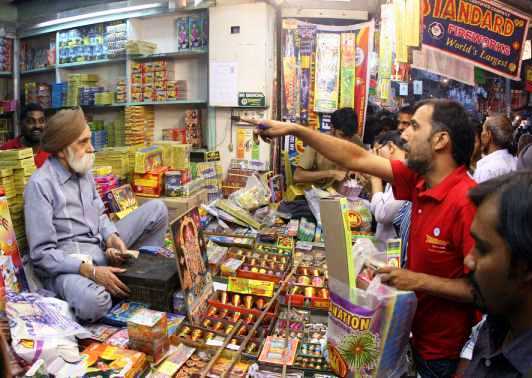
Traders in Delhi rue that court orders on pollution and government policy on crackers have blown away their annual festival business.
When you visit any web site, it may store or retrieve information on your browser, mostly in the form of cookies. Control your personal Cookie Services here.